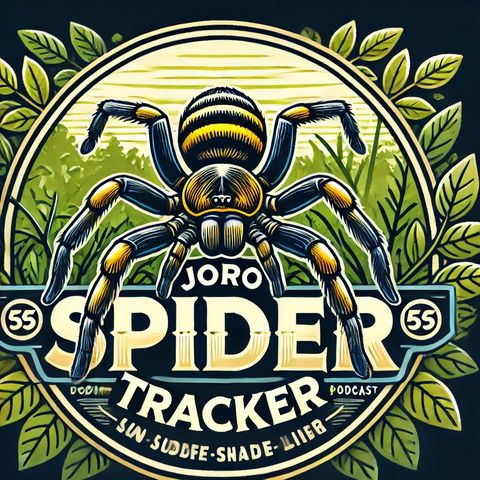Joro Spider's Fascinating Spread and Potential Impact on Ecosystems

Scarica e ascolta ovunque
Scarica i tuoi episodi preferiti e goditi l'ascolto, ovunque tu sia! Iscriviti o accedi ora per ascoltare offline.
Joro Spider's Fascinating Spread and Potential Impact on Ecosystems
Questa è una trascrizione generata automaticamente. Si prega di notare che non è garantita la completa accuratezza.
Descrizione
The Joro spider, scientifically known as Trichonephila clavata, is a species of orb-weaver spider that originated in East Asia, predominantly found in Japan, Korea, Taiwan, and China. Over recent years,...
mostra di piùCharacterized by vibrant colors, the Joro spider has a distinctive yellow, blue, and red pattern on its abdomen with a predominantly black and yellow striped body, which makes it quite identifiable. Females, which are significantly larger than males, can measure up to three inches across when their legs are fully extended. Their size and colorful appearance can make them seem intimidating, but they are not considered harmful to humans. The venom of the Joro spider is not potent enough to cause more than minor, localized symptoms to humans, such as mild pain or itching.
An interesting aspect of the Joro spider is its ability to adapt and survive in various climates, unlike its relative, the golden silk orb-weaver found in the southern part of the United States. This adaptability raises concerns about its potential spread to more northern regions, which could have ecological impacts. Joro spiders primarily feed on small insects, including mosquitoes and flies, which could influence local ecosystems and the balance of insect populations.
One of the most striking features of the Joro spider is its web. The webs can be quite large, spanning several feet in width. These constructions are strong and capable of trapping larger insects, thanks to the spider’s robust silk. The silk has unique properties that have caught the interest of scientists and researchers, particularly for its potential applications in materials science. Studies suggest that the silk's resilience and flexibility could be beneficial in creating more durable and sustainable materials.
Although the introduction of non-native species like the Joro spider can lead to ecological concerns such as competition with native species and potential disruptions to local ecosystems, it also promotes discussions on biodiversity and the impacts of global trade on wildlife distribution. Monitoring and research continue to better understand the ecological role of the Joro spider in its new environments and to manage its population responsibly.
Informazioni
| Autore | QP-4 |
| Organizzazione | William Corbin |
| Sito | - |
| Tag |
Copyright 2024 - Spreaker Inc. an iHeartMedia Company
